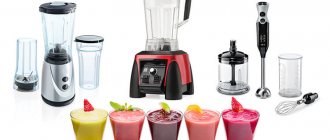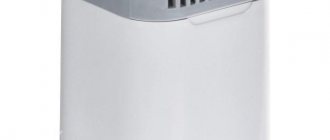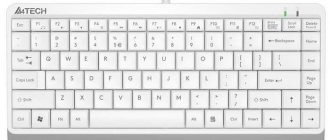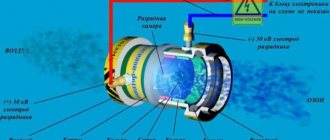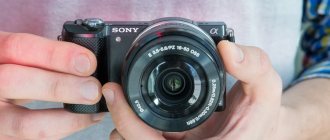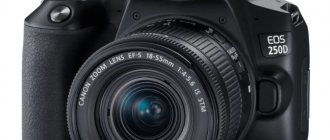Memory is an unreliable thing, so in order to preserve important moments for a long time, humanity has come up with various types of art of “capturing” reality. One of the most popular is still photography. Moreover, with the advent of almost every person having a smartphone, this type of art is becoming even closer.
However, professionals and many amateurs still advise using special photographic equipment: DSLR, mirrorless or compact to obtain high-quality results. How not to get lost in the variety of models offered and what is the difference between a DSLR, compact and mirrorless camera? How are these devices different? Find out in this review!
Before starting to get acquainted with various types of photographic equipment, it is worth making a special reservation. What exactly refers to a digital or SLR camera?
What is a digital SLR camera? These are compact SLR cameras that not only have a processor, like all digital ones, but also the presence of a special system of glass and mirrors.
A simple SLR camera with only mirrors can be electronic, or maybe film (for example, digital and analog cameras).
And now in more detail about the principles, pros and cons of each camera.
Camera design
What you can immediately pay attention to when comparing a regular DSLR and a compact is the dimensions, so the first difference between a DSLR and a digital camera is immediately visible. Due to the complexity of the system, a DSLR camera looks and weighs much heavier than a compact camera.
And, in addition, the lens adds weight to a SLR camera. A compact camera does not have the ability to change eyepieces, so the mass of the compact “out of the box” will be its final weight.
What types of cameras are there and how do they differ?
What do system cameras provide?
In terms of their capabilities and price, mirrorless cameras are located between compacts and DSLRs. They are often comparable in performance to entry-level DSLRs. These cameras can be recommended for amateur photographers who lack the capabilities of a compact camera, but size and weight play a role.
It is worth saying that the choice of optics for DSLRs is much larger, and you may encounter a problem when choosing the lens needed for a mirrorless camera in a particular situation. But manufacturers are constantly expanding their fleet of lenses for system mirrorless cameras, and various adapters are also being produced to match cameras and lenses.
Mirrorless cameras cannot replace professional SLR cameras, but for advanced amateurs they are quite suitable.
Reflex camera
What is a SLR camera? The first type of cameras is more complex due to its multi-component nature and operating principle. A DSLR also has more functions and modes than a simple compact. DSLR cameras have many lenses inside them, so a significant disadvantage from DSLR devices immediately appears - such a camera cannot be dropped and is better carried in a special bag or case.
The DSLR consists of two parts: Body or body, body plus kit lens. What does this mean among photographers? The body is the body itself, which contains all the glass and hardware, and the other half is the removable eyepieces.
As standard, all models come with a fairly ordinary lens, with which you can still get very good pictures. Their quality is far superior to a simple system unit.
Important! If you want to practice photography as an art, shoot distant or moving objects, nature, or turn to portrait photography, you will need to purchase different lenses: portrait, wide-angle, lens with a good zoom (increase), etc.
Inside the lens itself, unlike a digital camera, you can see lenses standing in a row and a diaphragm - a special plate that controls the amount of light falling on the matrix. Noise and color reproduction, and the overall quality of the entire photograph, depend on a properly functioning aperture.
An image using a SLR camera is obtained as follows:
- Light passes through the lenses.
- Then it hits the diaphragm.
- After the diaphragm, it floods the translucent mirror, dividing into two light beams. The first one is sent through rows of mirrors and passes a convex lens.
- The next stage is the pentaprism, where the light beam splits into an image and goes into the viewfinder. There the picture is already in the correct form, not upside down. And we see the result that we want to get by controlling photographic equipment.
- The second beam of light goes into a focusing system built on electronic sensors. They calculate whether an object is in focus. If not, then the lenses begin to shift a few degrees to make the image clear and “catch” focus.
- At the very end, when these two parallel processes come together and the photographer is satisfied with the image in the viewfinder, it’s time to press the shutter button. After which the mirror system moves aside, and the light completely falls on the matrix, fixing the desired image on it. Photo is ready!
Mirrorless cameras vs DSLRs or Why DSLR cameras are doomed
First, a little about the ins and outs of DSLRs. This unspoken nickname “stuck” to them due to the structural features - one of the main characters in the design of cameras of this kind is the moving mirror mechanism. It is used to ensure visibility of the field of the future frame in the optical viewfinder window
. Reflecting from the mirror, the light is reflected two more times through the faces of the pentaprism and only then enters directly into the viewfinder. When you press the shutter button, the mirror is removed from the path of the light stream so that it can easily penetrate the camera matrix. Moreover, the moment of shooting itself remains invisible in the viewfinder, since the raised mirror covers the matte focusing screen. In fact, the mirror mechanism is only an auxiliary element in the process of creating a photograph. Due to its bulky size, DSLR cameras are destined to be large and heavy. With mirrorless cameras getting on their feet, you can safely do without this mechanism.
| A clear difference between the operating principles of DSLRs and mirrorless cameras. |
Mirrorless cameras are good because the light flow is directed directly to the image sensor, bypassing all intermediate links in the chain. Accordingly, they have a simpler design, fewer fragile elements in it and, importantly, more attractive weight and size indicators. One of the main trump cards up the sleeves of mirrorless cameras:
Compact dimensions
With similar technical data, a DSLR of similar dimensions to a system camera with interchangeable lenses simply cannot be found. What can I say, the youngest of the mirrorless squad are practically indistinguishable in size from the average “digital point-and-shoot cameras”
, especially in combination with any of the “pancake” lenses. In addition, due to their short flange length, mirrorless cameras often use more compact optics, which eliminates the need to carry a whole suitcase of camera equipment with you when shooting.
| Some of the most compact mirrorless cameras on the market are classified as the Olympus PEN series. |
A small camera coupled with a compact lens attracts less attention to oneself, which is important in the genre of street photography, and takes up minimal space. True, for the sake of compactness, many of the mirrorless cameras in the entry-level and mid-segment lack a comfortable grip. DSLRs with ergonomics fare a little better, since their more massive body leaves enough space for both the handle and additional quick access buttons along with the control wheels.
Popular compact cameras Sony ZV-1 from RUB 49,700. Sony RX100 VII from RUR 71,900 Canon PowerShot G7X Mark II from RUR 34,500 Sony RX100 VI from RUR 57,000 Fuji FinePix X100V from 96,050 rub. Canon PowerShot G7X Mark III from 43,000 rub. Canon PowerShot G9X Mark II from RUR 27,500 Sony RX100 III from RUR 35,900 Olympus TG-6 from RUR 33,790 Panasonic DC-ZS200 from 47,400 rub. Canon PowerShot SX620 HS from RUR 17,490. Sony RX100 V from RUR 48,990 Panasonic DMC-TZ100 from 34,200 rub. Canon IXUS 185 from RUR 7,999 Sony W830 from 7,100 rub. Sony WX350 from 16,000 rub. Sony RX100 from 25,000 rub. Canon PowerShot G1 X Mark III from RUR 54,800 Panasonic DMC-TZ80 from 22,900 rub. Nikon Coolpix S9900 from RUR 17,900
Electronic viewfinder
Through the viewfinder window on board mirrorless cameras you can see the frame as it will turn out in the end. The image on the viewfinder screen is displayed from the matrix, taking into account the shutter speed and aperture settings, photosensitivity, white balance and exposure compensation
. In addition, it can display a lot of related shooting parameters to help the photographer, for example, a histogram. You are also offered to view on the main screen - there are no differences in this matter.
Good to know.
For the sake of accessibility, many entry-level mirrorless cameras do not have a viewfinder in their design, and the rear screen plays the role of a “universal soldier”. The display on the back of the camera body is used for sighting during shooting, changing parameters and viewing the footage.
| The “eye” of the optical viewfinder sees the image in the image and likeness of the human eye, and in the electronic viewfinder window the picture is shown taking into account the selected shooting parameters. |
For DSLRs with a mode for displaying the field of the future frame on the display, everything is much more complicated. This is due to the focusing features - when using the automatic focusing system in Live View mode, the camera works with the mirror raised, using less efficient contrast focusing. Those. A DSLR camera in this form is an analogue of a mirrorless camera, and not the fastest and most responsive.
At first, many mirrorless cameras were plagued by the problem of image inertia in the viewfinder and on the screen, which made them unsuitable for shooting highly dynamic scenes (reports from sporting events, shooting objects in motion, etc.). However, today, for the lion's share of current models, the refresh rate has increased significantly and the delay in transmitting the image to the camera display is negligible - it is not possible to see it with the naked eye.
Matrix stabilization
A strong argument in favor of many mirrorless cameras is the matrix stabilization system. The image sensor in mirrorless cameras with a matrix stub is mounted on a movable stabilizing platform.
Compensation for the camera's displacement trajectory is carried out by moving the platform with the matrix in a plane perpendicular to the optical axis of the lens. Such a stabilization system is good because it operates in conjunction with any optics, regardless of whether it has its own optical stub on board. In the most advanced mirrorless cameras, the matrix stub is capable of compensating up to 7 steps of exposure when shooting handheld or in low light conditions. A striking example of such a camera is the pro-tool Olympus OM-D E-M1X body Price from 148,990 to 179,990 rubles.
| The matrix stub in the arsenal of mirrorless cameras significantly simplifies handheld shooting at critical shutter speeds and helps in obtaining smooth footage when recording video. |
In the DSLR family, a similar system is found only on board models from Sony and Pentax, which cannot be called “purebred” DSLRs. This is due to the use of a translucent mirror and an electronic viewfinder in their design.
Popular cameras with image stabilizer
Sony A7 III body from RUR 123,900 Sony A7 III 28-70 from 125,900 rub. Sony a7C body from RUR 122,500 Nikon Z5 body from RUR 77,700 Sony a7C kit from RUB 136,000 Canon EOS R6 body from RUR 180,490 Canon EOS 6D Mark II body from 88,000 rub. Nikon Z6 II body from RUR 130,900 Sony ZV-1 from 49,700 rub. Sony A7r III body from RUR 151,300 Canon EOS R5 body from RUR 281,190 Fuji X-T4 body from RUR 109,600 Nikon Z5 kit from RUR 91,500 Sony A7r IV body from RUR 201,200 Sony A7s III body from RUR 307,700 Fuji X-S10 kit 18-55 from 96,200 rub. Fuji X-S10 body from RUR 73,380 Nikon Z6 kit from RUB 117,800 Fuji X-T4 kit 18-55 from 132,000 rub. Sony H300 from 6,700 rub.
No back and front focus problems
Focus sensors in mirrorless cameras are located directly on the plane of the matrix, due to which they managed to solve the eternal problem of back and front focus
. Both of these phenomena are unique to DSLR cameras and arise due to a mismatch between the autofocus sensor and the mirror.
Reference.
Back focus is an error in the autofocus system that causes the camera to focus behind the subject. Front focus is a similar mistake with the only caveat that focusing occurs in front of the subject.
At the dawn of their development, mirrorless cameras using the contrast autofocus method were significantly inferior in focusing speed to their mirror counterparts. However, with the development of hybrid autofocus systems, the problem has been eliminated. For example, the top-end mirrorless camera Canon EOS R body Price from 107,500 to 232,450 rubles. captures the subject in just 0.05 seconds, and has 5655 focusing points. The closest DSLR relative of the camera, the Canon EOS 1DX Mark II, has only 61 of them, despite the fact that the camera is positioned as a real reportage “monster”.
Video shooting
Thanks to built-in autofocus sensors and matrix stabilization, mirrorless cameras are much better suited for video shooting than DSLRs.
. Particularly successful in terms of video capabilities are Panasonic cameras and the Sony A7s series of full-frame flagships in all three generations.
Video shooting in 4K is the destiny of most mirrorless cameras, while in the “mirror world” recording videos in UltraHD resolution is the prerogative of top-segment devices.
Autonomy
The only point in the program where mirrorless cameras are inferior is battery life. The “gluttony” of mirrorless cameras is explained by the use of an LCD screen or an electronic viewfinder display for sighting and viewing captured images
. DSLRs allow you to shoot without their participation, with your eye glued to the optical viewfinder window.
| Many of the mirrorless cameras can be powered with life-giving energy in the field using an external battery. |
Most mirrorless cameras can take 300-400 pictures on a single battery charge, while for a group of DSLR cameras this figure is often 2-3 times higher.
Popular SLR cameras
Canon EOS 6D Mark II body from 88,000 rub. Canon EOS 250D kit from RUR 34,700 Canon EOS 600D Kit 18-55 from RUR 13,900 Canon EOS 2000D kit 18-55 from RUR 22,400 Canon EOS 6D body from RUR 49,200 Canon EOS 650D kit 18-55 from RUR 16,400 Canon EOS 200D kit 18-55 from RUR 32,500 Nikon D750 body from RUR 72,990 Canon EOS 5D Mark IV body from RUR 148,690 Nikon D5300 kit 18-55 + 70-300 from 25,120 rub. Canon EOS 90D body from RUR 76,500 Canon EOS 5D Mark III body from RUR 79,150 Nikon D5300 kit 18-55 from 24,800 rub. Nikon D5600 kit 18-55 from 37,400 rub. Nikon D610 body from 51,000 rub. Nikon D780 body from RUR 125,600 Nikon D3300 kit 18-55 from 16,700 rub. Nikon D5200 kit 18-55 from 17,000 rub. Canon EOS 800D kit 18-55 from RUR 44,900 Nikon D3500 kit 18-55 from 24,500 rub.
What's the result?..
The fact that mirrorless cameras are the future is beyond doubt. Such eminent photo brands as Fujifilm, Sony and Olympus, together with Panasonic, came to this long ago, which were completely reformatted for the production of mirrorless cameras.
| A couple of debutants from Nikon in the field of mirrorless cameras with a full-frame image matrix. |
2021 can also be considered a turning point for mirrorless cameras, when first-tier manufacturers entered the arena of the top segment - Japanese companies Nikon with full-frame Nikon Z6 body Price from 90,500 to 154,900 rubles. and Nikon Z7 body Price from 135,700 to 238,958 rubles, as well as the brainchild of the Canon company called Canon EOS R body Price from 107,500 to 232,450 rubles. Before them, for many years in a row, the palm in the flagship category of system cameras with interchangeable optics were tightly held in a tight grip by a series of full-frame mirrorless cameras from Sony (A7 line and flagship Sony A9 body Price from 212,500 to 299,990 rubles). There are a couple more notable products in the Fuji portfolio - Fuji GFX-50S body cameras Price from 339,900 to 359,990 rubles. and Fuji GFX-50R body Price from 257,000 to 305,000 rubles. represent the medium format camera league.
The share of mirrorless camera sales on a global scale is growing inexorably every year. Initially aimed at enthusiast photographers, they are acquiring new functions and becoming more and more professional, which makes even avid “conservatives” turn their attention to the group of mirrorless cameras. And the calling of the public, you see, is a significant plus in the karma of system cameras with interchangeable lenses and the path to their further success.
Good luck with your shooting!
Compact camera
What is the difference between a system camera and a DSLR? The design of a compact, unlike a DSLR, is much simpler. This is a unit with a one-piece body and a built-in lens.
The principle of operation and image acquisition is the same as that of a SLR camera, there is no difference here. However, light passing through a set of lenses is not separated into the viewfinder and the foam prism. The light immediately hits the matrix, and after processing the image by the processor, a photo comes out.
In fact, the photographer here is the equipment itself, and the owner of the compact is the customer who needs a specific object in the photograph.
Therefore, the disadvantage of a compact unit is that the processor processes the image in its own way, not allowing you to change the final result, which is easily possible in a DSLR.
Digital cameras are also divided into several classes based on the principle of applicability. There are reporter, studio, panoramic, etc. soap dishes.
These cameras have a built-in flash, and there are several standard modes, for example, conventionally called portrait, landscape, and macro photography.
The soap dish saves its files in JPEG format, unlike a DSLR, which creates a raster image when shooting. Why is a mirror device better at this point? A raster image is a picture, which is then very convenient for professional designers to develop in Photoshop. A digital camera does not have this privilege.
However, the following interesting “gadgets” can be found in system cameras:
- Interchangeable attachments for an already built-in lens, for example, to create a “semblance” of a wide-angle image.
- "Hot shoe" This is a special plate at the top of the compact where you can attach a removable flash or image stabilizer to make the photo as clear as possible.
- Manual focus. A relatively new thing, since the focus is still controlled by the processor itself. What's better? Determined by the owner of the equipment himself.
- Powered by any batteries. It's not always convenient to have a battery, which suddenly happens! and discharged. Standard AA batteries are sold everywhere, and the problem can be solved very quickly. This is where the digital camera compares favorably with other cameras. With a DSLR camera, this can be solved in an instant only with a special spare battery.
Who are expensive mirrorless cameras for?
Let's be honest - not everyone can afford cameras priced around $1,500, and also take into account the additional costs of optics, which can cost about $500-800. Such models were created for professional artists who are willing to pay for high quality images. And due to the absence of a mirror in system cameras, they are lighter and more compact.
Let's consider the Olympus OM-D E-M1 camera, created for true connoisseurs of quality and comfort. Users appreciate the light weight and size of the model, while the camera is capable of creating high-quality photographs in low light conditions; the mirrorless camera is quite expensive, approximately $2,000, including the lens. For that kind of money you can buy a full-frame SLR camera, which is designed for professional photographers who know a lot about the quality of both technology and images.
What to look for in high-end mirrorless cameras
If you're going to invest such a huge amount of money on a camera, you need to know what you're paying for, and the list of requirements for new camera equipment will be long.
Firstly, the quality of the photographs must be excellent; of course, the quality of the images is not the only important factor, but it is one of the fundamental conditions. Please note that when we talk about good quality photographs, we are not talking about perfect photographs, we are simply talking about decent images - clear and bright. You can get pictures like this with almost any camera that costs over $400.
Go ahead. A mirrorless camera should have a well-thought-out, powerful and high-quality body, where all the buttons and functions are well thought out and well implemented. The display and electronic viewfinder with high resolution are also of great importance. In addition, the camera must be fast, it must have instant focusing and a good burst speed. If the autofocus system is not snappy, you may miss an important shot. If you photograph a subject in motion, this can be a fatal mistake.
The important point is that the camera must be compatible with a large number of lenses. This is very important, because only in this way will the master be able to experience the freedom of creativity. Micro Four Thirds cameras have the most compatible lenses compared to Canon or Nikon.
Which camera to choose
{module Yandex direct (7)}
One of the best expensive mirrorless cameras is the Olympus OM-D E-M1. The model has a rigid body and also has a weather seal that protects the camera from water, dust and dirt. The camera can be exposed to water for ten minutes. In addition, the model boasts the fastest autofocus among all system cameras, the OM-D E-M1 is capable of photographing up to 10 frames per second. The mirrorless camera has a very high-quality image stabilization system. Thanks to fast autofocus, good image stabilization, and high burst speed, the OM-D will provide you with excellent photographs. Of course, to get pro-level performance, you'll have to pay a "pro" price.
A key feature of the E-M1 is its weather sealing, which wildlife photographers will appreciate. They will no longer have to be afraid and worry about their photographic equipment while filming in the pouring rain, in the mud, and in the dust. In addition to a durable and reliable camera body, you will also need a water-resistant lens. If it is necessary to take photographs underwater, the photographer will need an underwater housing; with it, you can dive to great depths and spend as much time underwater as necessary.
Comparison of Olympus OM-D E-M1 and Sony NEX-6
The E-M1's body is relatively large, which means the camera has many external controls. You can directly control focus, use automatic and manual modes. There is also a shutter button, two dials for controlling the mirrorless camera, a video recording button, a mode switch and two custom Fn buttons.
The camera has very conveniently placed important controls that allow you to control exposure bracketing, white balance and ISO sensitivity. Most photographers will be satisfied with the user-friendly menu system. At first, it may be difficult for you to navigate all the variety of buttons, but over time, once you get used to the layout of the controls, working with the camera will become much easier.
There are fewer controls on the rear panel. There is a large tilt-and-turn touchscreen LCD display, the resolution of which is impressive. The screen has a resolution of 2,360,000 dots. As for the electronic viewfinder, it has 100% coverage and a zoom of 1.48, and there is also an eye sensor near the viewfinder, which allows you to automatically switch the camera's focus control between the display and the viewfinder. The E-M1 viewfinder is one of the largest, highest resolution viewfinders currently on the market.
One of the advantages of owning Micro Four Thirds is the availability of a large number of lenses compatible with the cameras. Moreover, even lenses from other brands are compatible with Micro Four Thirds models.
Olympus OM-D E-M1 users will appreciate the speed of focusing during continuous shooting. The camera not only shoots up to 10 frames per second, but also produces well-focused shots. The camera's focusing system contains 81 contrast-detecting focus points and 37 phase-detecting areas. The E-M1 is the fastest mirrorless camera, although compared to DSLR cameras, the OM-D E-M1 is still inferior.
The stabilization system on the E-M1 is also the best in a mirrorless camera and arguably one of the best available on the camera market today. Olympus has four stops of stabilization - this means that at a shutter speed of 1/15, the camera can shoot the same as at 1/125, in terms of stabilization.
The OM-D E-M1 also features a must-have Wi-Fi feature that allows you to shoot remotely using the camera. In this case, the camera will be controlled via a smartphone.
Image quality is extremely important. Perhaps this is the main measure by which a camera can and should be evaluated. The E-M1 can withstand serious competition with other cameras. Despite the fact that the OM-D is equipped with a Thirds Micro Four sensor, which is noticeably smaller than an APS-C sensor, the mirrorless camera is capable of creating beautiful and high-quality photos.
The size of the camera sensor is significantly smaller than the full-size sensor of the Sony A7. There's every reason to believe that the Sony A7 will produce more impressive photos. Why is sensor size so important? A larger sensor means that each pixel on the sensor is larger, which will help you get more light out of it. Typically, a larger sensor size means better dynamic range, lower image noise, and the ability to achieve a much shallower depth of field.
When it comes to cameras with a Micro Four Thirds sensor, the E-M1 is the best camera that produces truly impressive photos. Thanks to excellent technical components, image quality is on par with most APS-C cameras. The differences in color and dynamic range are so small that you'll hardly notice the differences between the two cameras. One resource comparing the OM-D E-M1's light sensitivity performance states that "We didn't notice any significant degradation in image quality in low light conditions compared to APS-C DSLRs."
Steve Huff is a street photographer and celebrity blogger, o He is also o.
Overall, the OM-D E-M1 is an incredible camera. Reviewed.com says this is one of the best cameras of the year. “The OM-D E-M1 is an excellent mirrorless camera that incorporates only the best that Micro Four Thirds system cameras can guarantee. The mirrorless camera provides quality that satisfies the needs of experienced photographers. The E-M1 can be an excellent backup camera for professional DIYers.”
Phoblographer has this to say about the model: “In many ways, the Olympus OMD EM1 is the ideal Micro Four Thirds camera and could become the ideal mirrorless camera.” Steve Huff About The new E-M1 is the fastest, best-engineered photographic tool available, and the most versatile system camera for producing great photos and videos available today for around $1,400.
Flaws
Even when we are talking about an expensive camera that costs over $1000, you still get a model that has its advantages and disadvantages. While the OM-D E-M1 produces great photos, many of its mirrorless competitors boast even better images.
After the appearance of full-frame mirrorless cameras Sony A7 and A7r, the E-M1 has serious competitors. One of the Internet resources tested images from two cameras, and it must be said that in many respects the E-M1 is inferior to its full-frame competitors. When it came to comparing photos taken at high light sensitivity, the E-M1 performed better due to its lower sensor resolution. Cheaper Sony NEX models cope with noise reduction much better than their expensive full-frame “brothers”.
Brief review and comparison of characteristics of Sony A7 and Sony A7R
The weak point of the E-M1 is video shooting. Videos taken with this mirrorless camera look pretty good, but the quality is lagging behind many other mirrorless cameras. Reviewed.com reports that the E-M1 has some problems when shooting moving subjects.
DPReview states that "the interface and controls may seem very complex and confusing at first." Some critics criticize cameras with Micro Four Thirds matrices because manufacturers have not changed the matrix for several years. Other companies such as Fujifilm and Canon regularly update their processors and sensors. For Olympus, hardware upgrades and firmware updates are not a priority. This won't be a problem for most users, but discerning photographers and critics may be unhappy with the lack of innovation.
Differences in the design of compacts and DSLRs
DSLR or compact? In addition to the obvious differences in operating principles, a DSLR camera differs from a regular compact camera in focusing functionality. A SLR camera has an optical focus, as optics work - a system of mirrors and lenses. Compacts are electronic; the focus is monitored by a processor. This is why compacts are often popularly called “point-and-shoots,” because due to the automatic focus, the processor sometimes likes to “blur” images, making them unclear.
Flaws
- Small selection of accessories . The choice of suitable accessories (lenses, flashes, etc.) is significantly small compared to DSLRs. I think this is temporary, since system cameras appeared on the market not so long ago, just at the beginning of this century.
- Lack of optical viewfinder . The photographer uses only a display or an electronic viewfinder. This affects inaccurate focus adjustment and incorrect color reproduction. It is difficult to work with this viewfinder in the dark due to the fact that the display transmits a lot of digital noise, and the image is barely visible. Recently, cameras have begun to come out with both electronic and optical viewfinders, which significantly improves the photographer’s work.
- Control suffers due to compactness . There are few control buttons on the body. Most of the functions are moved to a multi-level menu, which is not very acceptable for most photographers, since you have to learn the location of the functions and spend a lot of time on settings. Holding the camera is also not entirely comfortable.
- Contrast autofocus . Since autofocus is contrast, that is, the camera adjusts the parameters according to contrast, its operation is very slow and less accurate. It is being adjusted gradually. This will prevent you from shooting sports photography. The absence of a mirror affects. In some cameras, manufacturers have begun to implement hybrid autofocus (phase-contrast), which significantly speeds up and corrects shooting.
- High price . Since system cameras are a new trend in the photographic equipment market, the price is corresponding. In numerous cases, the cost of mirrorless cameras and their accessories is higher than their DSLR counterparts.
- Rapid battery discharge and short service life . The combined operation of the processor, matrix and display leads to rapid discharge of the camera. Mirrorless cameras with a single battery can be used for 300 shots, while DSLR cameras are capable of 800 or more. This problem affects travelers the most.
- Contrast changes . In the images you see a strong contrast between white and black and very little in between - grey.
Functionality of compacts and DSLRs
Compact fans always argue with DSLR fans about functionality. What is the difference? Here it is important to consider the main thing - for what purpose does a person take photographic equipment? If you need a simple device that works on the principle: “click” - “here is a photo,” then a compact is the best option.
No need to bother with settings, know the basics of photography, etc. For a point-and-shoot camera, the most important thing is to capture the desired frame with little loss. Yes, the image may have noise and may be slightly blurred, but this is not critical, however, a photo for memory is taken extremely quickly. You can quickly zoom in or out on an object, as well as use several filters after shooting with the camera.
So, SLR and digital...
DSLR models are much more than just a camera. It is no coincidence that the camera is called a SLR, that is, the best reflector. These cameras offer a lot more room for experimentation than digital ones, especially in manual mode. Changing the focus, changing the shutter speed, adjusting the aperture time is easy!
Only for this you need to understand the instructions well and learn the basics of photography. For beginners, there is on-site practice - an automatic mode that will help you learn everything in the field.
Thanks to better focusing, the DSLR camera offers clear continuous shooting and panoramas without loss of quality. And, of course, color rendering... DSLR cameras even have interchangeable filters to play with color and make the end result a real work of art.
Advantages
- Small dimensions . Mirrorless cameras are only slightly larger in size than point-and-shoot cameras. Makes it possible to take a large number of lenses with you.
- Light weight.
- High image quality . The image quality is the same as that of amateur SLR cameras.
- Silence . The shutter is quieter than DSLR cameras because there is no mirror.
- No vibrations . Vibrations are practically not felt due to the absence of a mirror, which means it is possible to obtain sharper images.
- High-quality standard optics . Kit lenses are of better quality than budget DSLRs.
- High shooting speed . Possibility of using shutter speeds of 1/2000 s or less due to the absence of a mirror. On average, you can take 10-12 pictures per second.
- Easy and fast cleaning process . Since there is no mirror, there are no unnecessary problems. Cleaning is done when the lens is disconnected and is quite possible at home.
- Availability of a large ASP-C matrix . System cameras outperform compacts in this regard, and with full-format SLR cameras they are almost on the same level.
- More mileage . Each digital camera has its own conditional shelf life, which is called mileage - the number of frames taken by the camera before the structure wears out. For example, if you take a Nikon D5100 SLR camera, then its mileage will be 100,000 shots, that is, it can be used for 3-4 years. For mirrorless cameras, this figure is much higher, mainly due to the lack of a mirror. I have two detailed articles: how to check the mileage of a Canon SLR camera and how to check the mileage of a Nikon SLR camera.



